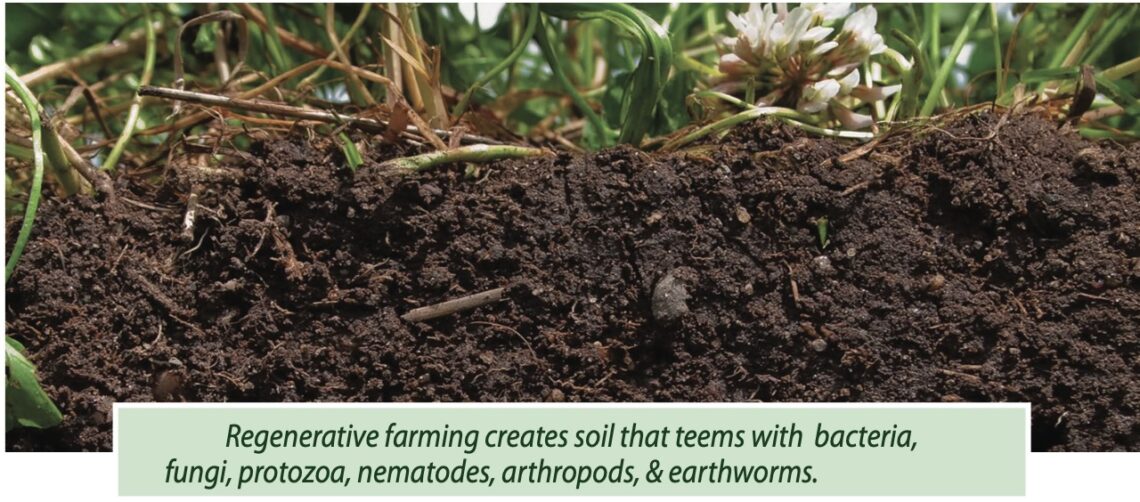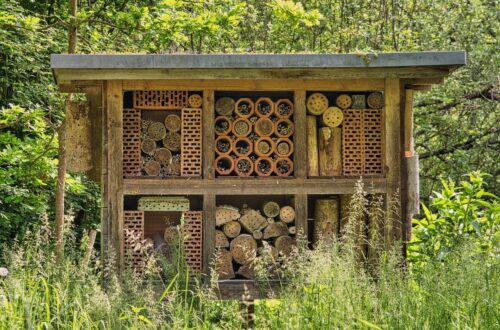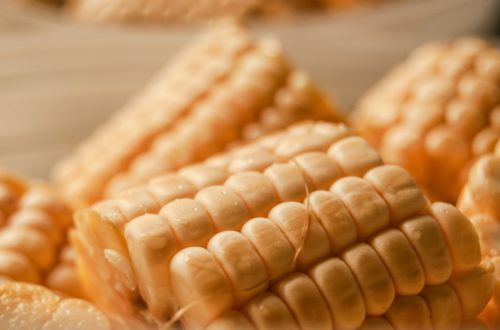for the Herb [and Home] Garden
More and more farmers are switching to Regenerative Agriculture principles. One main reason for the switch is to take better care of topsoil, so less carbon is released into the atmosphere. The methods used increase soil water holding capacity, stop erosion, protect the purity of groundwater, and create conditions for more disease and pest-resilient crops. These worthwhile approaches to taking care of the planet can be incorporated on farms large or small, as well as home gardens.
Maybe you are already using some of these practices but didn’t realize what an innovator you are. We do, and we’ve found that most of the methods mentioned for this type of farming also apply to any size garden or herb plot.
No-Till/Minimum Tillage
This minimizes soil disturbance and actually enriches it. For farmers, this means putting away the big plows and heavy equipment that compact soil. Instead, they leave last year’s crop on the land to decompose and return nutrients to the soil. Adding a layer of compost increases soil nutrition and reduces weeds. If weeds are a major problem in a home garden, a layer of cardboard can be put down before adding the compost. Cultivators and chisel plows in large and small sizes are available. The idea is not to turn the soil over, which happens when rototilling or plowing, bringing worms, good bugs, and nutrients to the surface to die or get washed away. Instead, gently aerate the first few inches of soil. We use a 4-pronged rake, often used for clamming, that is used as a chisel. This type of rake works well in small herb beds and under woody plants.
Plant Rotation
Move plants to different areas of the garden each year. We find this works best with annuals, such as basil, cilantro, dill, and parsley. If you are using raised beds for herbs, this rotation should be fairly easy. Or if you incorporate these annuals within a larger vegetable garden, as we do, it is also relatively easy to move the dill next to the beans one year and next to the cabbage the following year. This not only rotates the crops but provides insect protection for your vegetables.
Use Less/No Chemicals
Synthetic fertilizers and chemicals for pest and weed control continue to pollute the waterways. By choosing natural fertilizers, compost, mulch, and companion planting, gardeners can lessen toxins in our rivers, streams, and aquifers. Local extension offices and many websites provide alternatives to chemicals. We have discovered that planting yarrow next to our roses has significantly lessened aphids on them. Natural compost, such as horse, cow, or chicken, is often available from local farms or in bags at the local garden center. If you don’t already have a compost pile/barrel, get one started to provide valuable nutrients to your plants at a low cost.
Support Farms That Use Regenerative Agriculture
Many large corporations are beginning to evaluate their farming practices for change primarily because consumers are asking for it. We can support local farms that use sustainable practices, and we can support stores that expect farms to practice regenerative agriculture. Buying from small, local farms enables us to know them and support those utilizing regenerative methods.
Agriculture contributes to 1/3 of the global greenhouse gas emissions from human activities. Regenerative agriculture can be the key for agriculture to transition from contributing to the climate crisis to helping solve it. Home gardeners can be a part of this change, too.
Erin Harwood & Eloyce O’Connor are co-owners of Garden Delights Herb Farm in Brush Prairie, WA, where they grow a variety of herbs for culinary, medicinal, pet, home, and garden use. They also offer classes.
For more info: http://www.gardendelightsfarm.com






